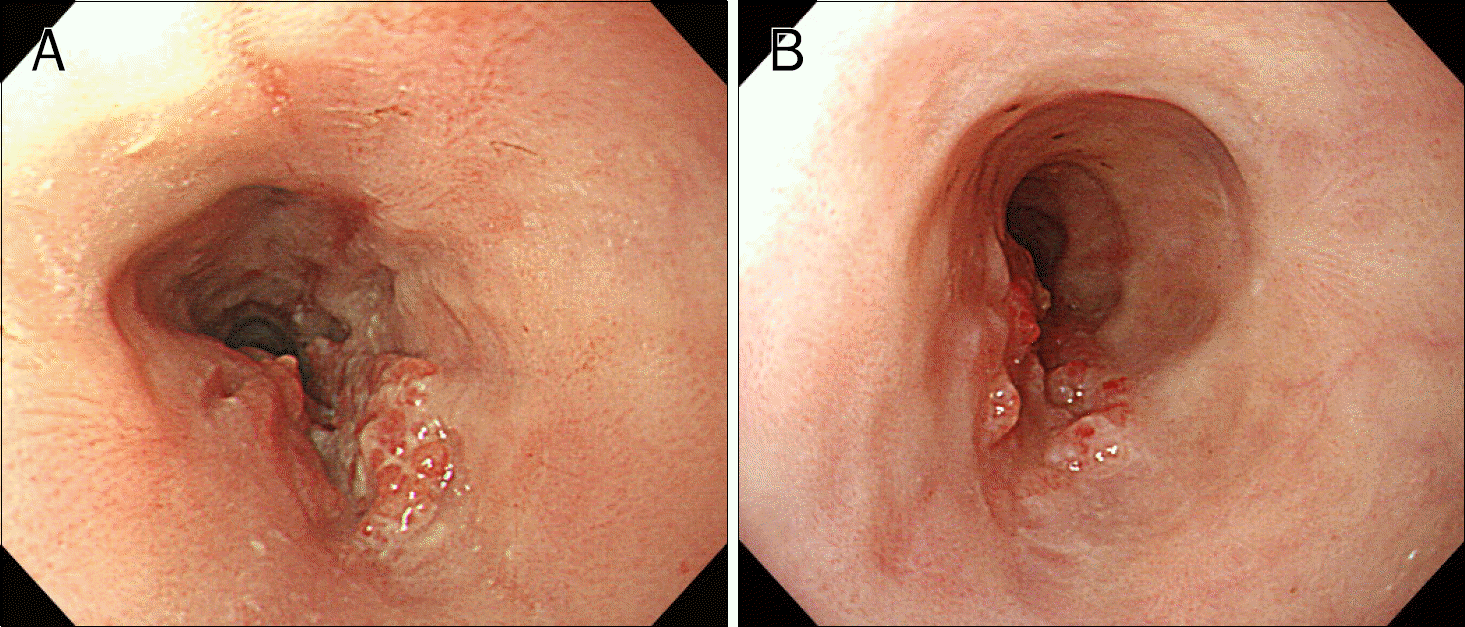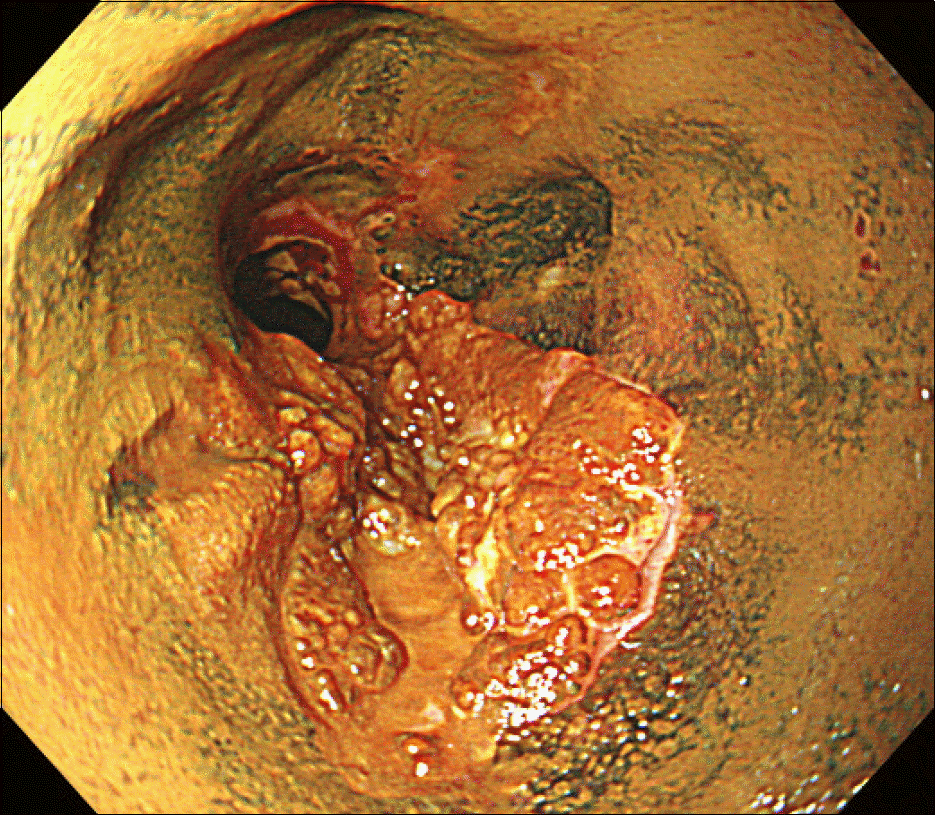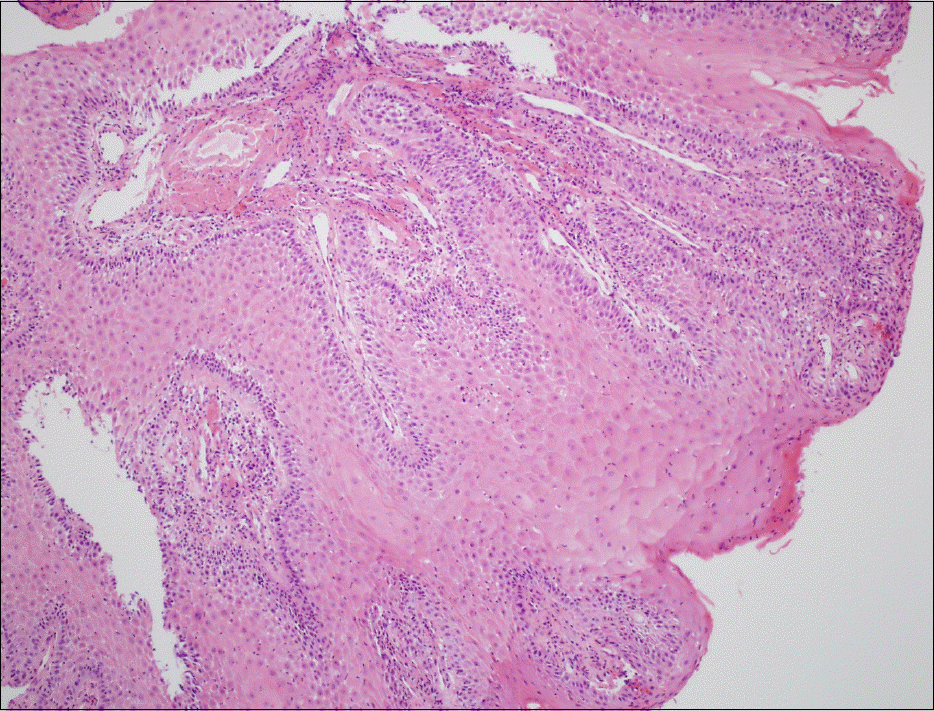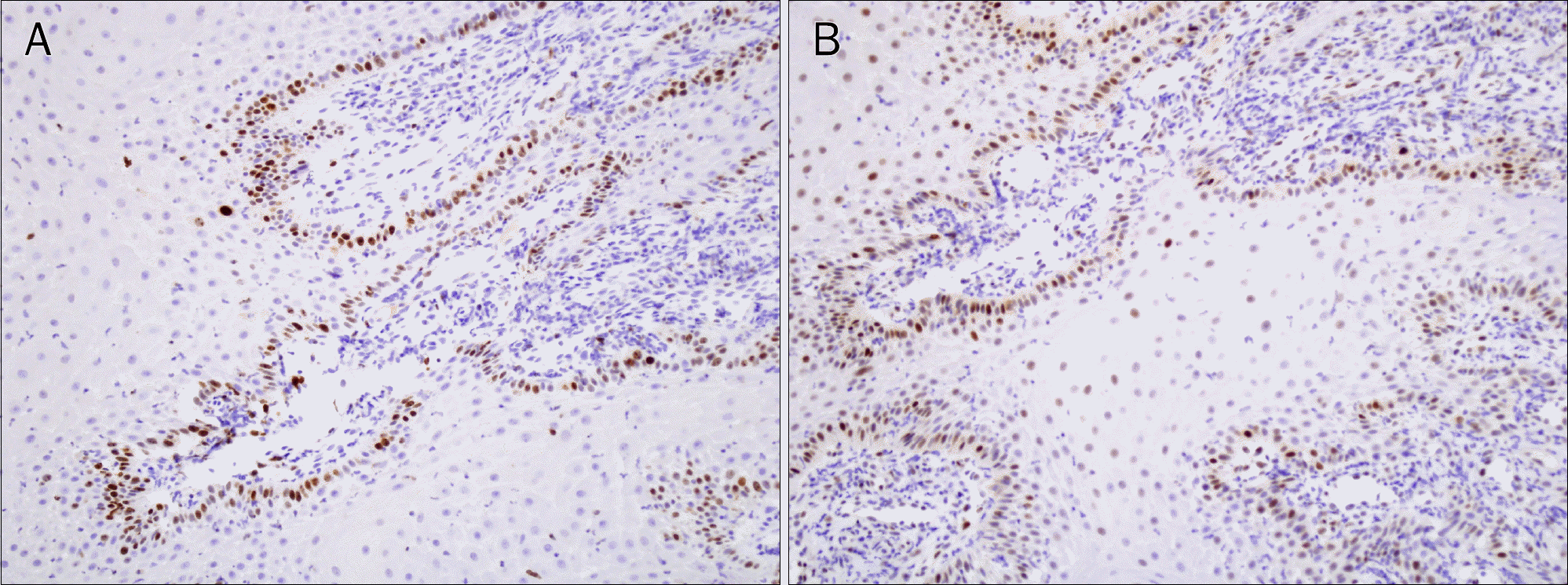Abstract
Pseudoepitheliomatous hyperplasia is a benign condition that may be caused by prolonged inflammation, chronic infection, and/or neoplastic conditions of the mucous membranes or skin. Due to its histological resemblance to well-differentiated squamous cell carcinoma, pseudoepitheliomatous hyperplasia may occasionally be misdiagnosed as squamous cell carcinoma. The importance of pseudoepitheliomatous hyperplasia is that it is a self-limited condition that must be distinguished from squamous cell carcinoma before invasive treatment. We report here on a rare case of esophageal pseudoepitheliomatous hyperplasia in a 67-year-old Korean woman with a lye-induced esophageal stricture. Although esophageal pseudoepitheliomatous hyperplasia is infrequently encountered, pseudoepitheliomatous hyperplasia should be considered in the differential diagnosis of esophageal lesions.
References
1. Fu X, Jiang D, Chen W, Sun Bs T, Sheng Z. Pseudoepitheliomatous hyperplasia formation after skin injury. Wound Repair Regen. 2007; 15:39–46.

2. Zayour M, Lazova R. Pseudoepitheliomatous hyperplasia: a review. Am J Dermatopathol. 2011; 33:112–122.

3. Biswas A, Gey van Pittius D, Stephens M, Smith AG. Recurrent primary cutaneous lymphoma with florid pseudoepitheliomatous hyperplasia masquerading as squamous cell carcinoma. Histopathology. 2008; 52:755–758.

Fig. 1.
Endoscopic view of the esophagus showing an intraluminal protruding mass 25 cm from the incisor teeth during: (A) an initial esophagogastroduodenoscopy; (B) a surveillance esophagogastroduodenoscopy performed after two months.





 PDF
PDF ePub
ePub Citation
Citation Print
Print





 XML Download
XML Download